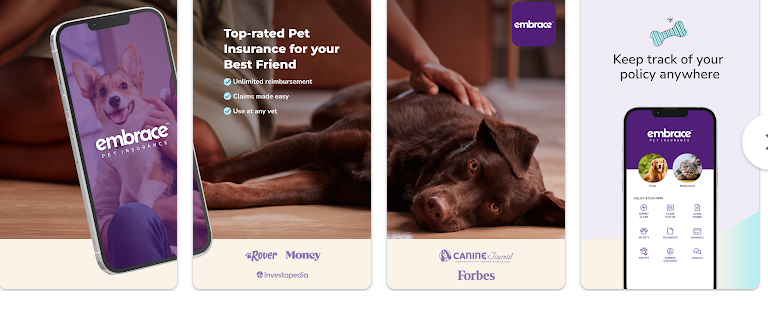Pet insurance can be a lifesaver when it comes to covering veterinary costs, but filing a claim can feel daunting if you’re new to the process. Fortunately, most pet insurance companies in 2025 have streamlined their procedures, offering user-friendly apps and online portals. This step-by-step guide will walk you through how to file a pet insurance claim efficiently, with tips to avoid common pitfalls and ensure a smooth reimbursement process.
“Pet insurance is useful, but not all plans are the same. If you haven’t picked a provider yet, check out our guide on Top 5 Pet Insurance Providers in the US (2025).”
- Step 1: Understand Your Pet Insurance Policy
- Step 2: Visit a Licensed Veterinarian
- Step 3: Collect the Required Documentation.
- Step 4: Submit Your Claim.
- Step 5: Monitor Your Claim status
- Step 6: Receive Your Reimbursement
- Step 7: Handle Denials or Disputes
- Insurer-Specific Highlights
- Final Thoughts
Step 1: Understand Your Pet Insurance Policy
Before filing a claim, familiarize yourself with your policy’s details. Review the following:
Coverage: Verify what is included in the plan, such as accidents, illnesses, or wellness care (for example, vaccinations and flea prevention). Be aware of exclusions, such as pre-existing conditions or routine care, as these can vary by provider.
Waiting Periods: Most insurance plans have waiting periods, which may range from 14 to 30 days for accidents and illnesses, and up to 6 months for conditions like cruciate ligament issues.
Reimbursement Details: Review your reimbursement rate, which typically ranges from 70% to 90%, along with the annual deductible and any coverage limits.
Pro Tip: Contact your insurer’s customer service (via phone, app, or chat) if you’re unsure about coverage specifics. For example, Spot Pet Insurance offers detailed policy FAQs on their Member Center Portal.
Step 2: Visit a Licensed Veterinarian
Take your pet to any licensed veterinarian in the U.S. or Canada, as most pet insurance plans allow flexibility in choosing providers. Pay the vet bill upfront, as pet insurance typically operates on a reimbursement model (except in cases like Trupanion’s Express direct payment system).
What to Get: Request an itemized receipt that includes:
Date of service
Diagnosis
Procedures and medications
Fees, taxes, and any discounts applied
Why It Matters: This receipt is essential for claim submission. Estimates or unpaid invoices are generally not accepted.
Pro Tip: If your vet offers direct payment (e.g., Pets Best’s Vet Direct Pay), confirm they have your policy details before treatment to potentially avoid upfront costs.

Step 3: Collect the Required Documentation.
To file a claim, you’ll need:
Itemized Receipt: Ensure it shows the bill is paid and includes all treatment details.
Veterinary Medical Records: Include SOAP notes (Subjective, Objective, Assessment, Plan) or records from the visit. First-time claims or complex cases may require full medical history to rule out pre-existing conditions.
Claim Form (if required): Some insurers, like Nationwide, require a completed claim form, while others (e.g., Embrace, Lemonade) allow form-free submissions via their app or portal.
Pro Tip: Save copies of all documents for your records. Scan or photograph receipts clearly to avoid delays due to illegible submissions.
Step 4: Submit Your Claim.
Most insurers in 2025 offer multiple ways to file claims, with online options being the fastest. Here’s how:
Online Portal or App: Log into your insurer’s portal or app (e.g., Spot’s Member Center, ASPCA’s My Pet Insurance app, Lemonade’s mobile app). Select “File a Claim,” upload your receipt and records, and provide details like the pet’s condition and treatment date.
Email, Fax, or Mail: If online submission isn’t available, download a claim form from your insurer’s website (e.g., Petplan, Nationwide) and send it with documents via email, fax, or mail. Check specific submission details on their site.
Deadlines: Submit claims within your insurer’s timeframe, typically 90–270 days from treatment (e.g., 180 days for Lemonade, 6 months for Desjardins).
Pro Tip: Double-check that all required fields are complete and documents are clear to prevent processing delays. For example, Lemonade requires SOAP medical records from within 12 months of policy start for certain claims.

Step 5: Monitor Your Claim status
submitted, monitor your claim’s status through your insurer’s app or portal. You’ll typically receive an email confirmation upon submission and updates on approval or additional requirements.
Processing Times: Most claims are processed within 5–15 business days, though complex cases may take up to 30 days (e.g., Nationwide).
What to Do: If you don’t hear back within the expected timeframe, contact your insurer to check for issues like missing documents.
Pro Tip: Use apps like Embrace’s or ASPCA’s for real-time tracking, which can reduce anxiety about claim status.
Step 6: Receive Your Reimbursement
If approved, you’ll be reimbursed based on your policy’s terms (reimbursement rate minus deductible and co-insurance). For example:
A $1,000 vet bill with an 80% reimbursement rate and $100 deductible would yield $720 ($1,000 × 80% = $800, minus $100 deductible).
Payments are typically sent via direct deposit (2–5 days) or check (10–15 days).
Pro Tip: Set up direct deposit in your account for faster payouts. If your insurer offers direct vet payment (for example, Trupanion Express), coordinate with your vet to skip upfront costs.
Step 7: Handle Denials or Disputes
If your claim is denied, review the Explanation of Benefits (EOB) to understand the reason (e.g., pre-existing condition, excluded treatment, or incomplete documentation). Follow these steps:
Appeal: Check your insurer’s appeal process (usually on their website under “Claim Review” or “Appeal”). Submit additional documents if needed.
Escalate: If the appeal doesn’t resolve the issue, contact your state’s insurance department to file a complaint. For example, Pets Best may involve a third-party vet for a second review.
Pro Tip: Keep detailed records of all communications with your insurer to support your case.
Additional Tips for Success
File Promptly: Submit claims as soon as possible to meet deadlines and avoid complications.
Stay Organized: Maintain a folder (digital or physical) with all vet records, receipts, and claim correspondence.
Insure Early: Enroll your pet before health issues arise to minimize pre-existing condition exclusions.
Leverage Technology: Use insurer apps or portals for faster submissions and tracking. For instance, Spot processed over 48 million in reimbursements in 2024 via their Member Center.
Explore Direct Payment: If upfront costs are a concern, ask your vet and insurer about direct payment options (e.g., Trupanion, Pets Best).

Insurer-Specific Highlights
Final Thoughts
Filing a pet insurance claim in 2025 is easier than ever, thanks to digital tools and streamlined processes. By understanding your policy, keeping thorough records, and submitting claims promptly, you can maximize your reimbursement and minimize stress. Always refer to your insurer’s website or customer support for specific instructions, and don’t hesitate to reach out if you encounter issues.
“Want to compare plans before you claim? Don’t miss our updated list of Top 5 Pet Insurance Providers.”
Disclaimer: This guide is for informational purposes only and does not replace your insurance policy’s terms, conditions, or exclusions. Always consult your policy documents or insurer for exact details.


